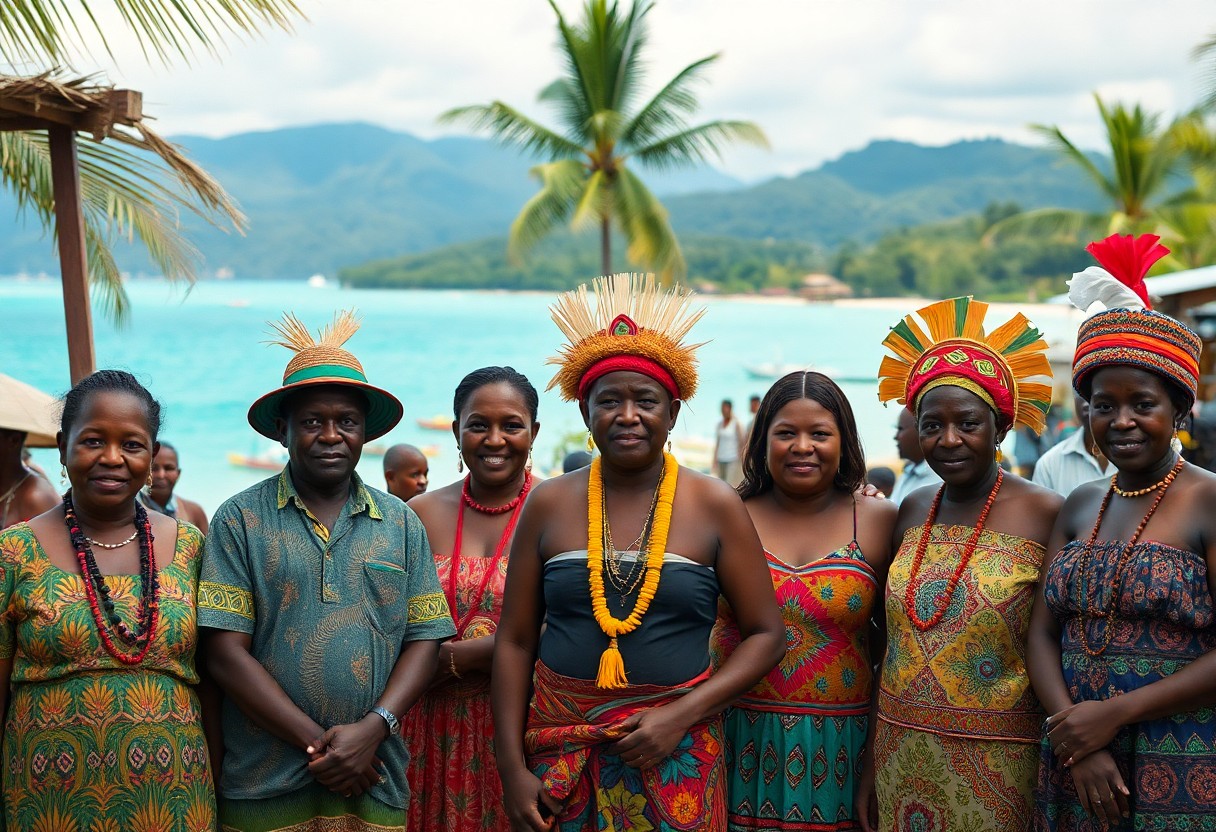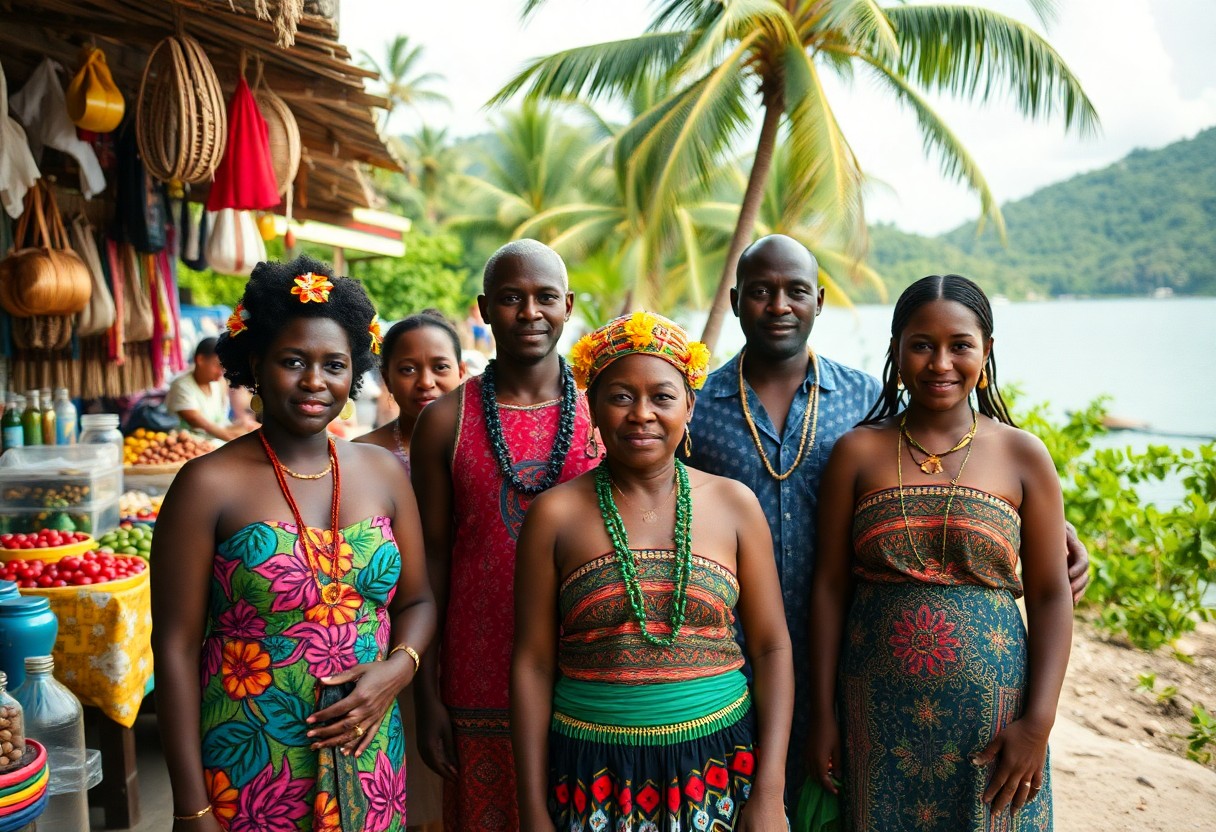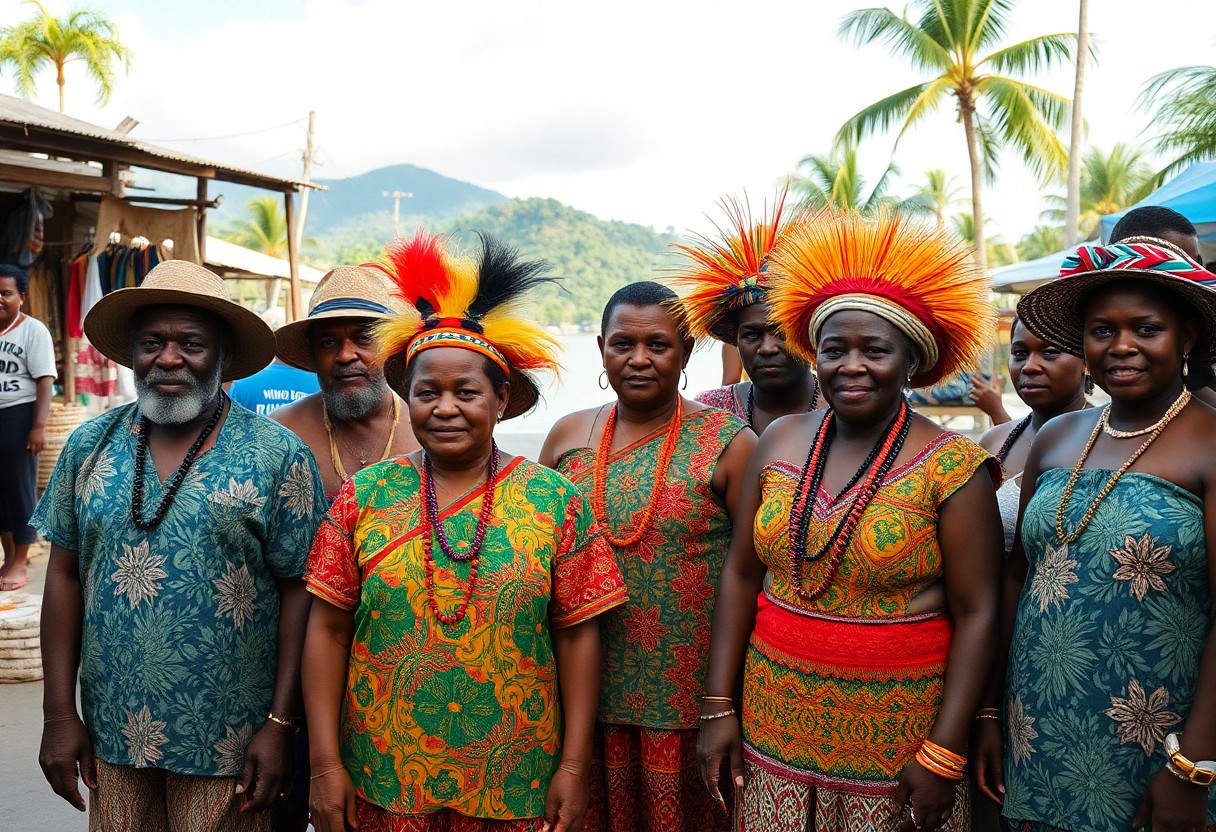The Hispanic heritage of Belize intricately weaves together its Caribbean roots, creating a vibrant cultural tapestry that is both rich and complex, transcending simplistic categorization. By immersing yourself in the lively identity of the Belizean people, you will discover a dynamic blend of diverse ethnicities. As you explore Belize’s multifaceted demographic landscape, you will meet a population enriched by Creole, Garifuna, Maya, Mestizo, and various other distinct backgrounds. This journey will enhance your understanding of Belizean identity, illustrating that its citizens are not just Hispanic or Caribbean, but form a complex society that challenges conventional racial and cultural boundaries. The historical context of colonization, migration, and cultural fusion has crafted a national identity that is both inclusive and continually evolving.

Discovering the Unique Ethnic Groups that Define Belize
Belize is characterized by a remarkably diverse population, and its ethnic makeup reflects a rich history of migrations and cultural exchanges. In this vibrant nation, you will uncover a multitude of ethnic groups, each contributing distinctively to the national identity. The population comprises various communities such as Mestizos, Creoles, Maya, Garifuna, Mennonites, and other smaller groups, all of which together create a multicultural landscape that is as colorful as it is dynamic, shaping the essence of Belizean society.
Examining the Impact and Role of the Creole Community in Belize
The Creoles are recognized as one of the most influential ethnic groups in Belize, with roots tracing back to African slaves and British settlers. Acknowledged as a foundational community within Belize's cultural framework, they primarily inhabit urban centers, particularly Belize City. Their language, Belizean Creole, is widely spoken and serves as a vital component of the nation’s rich linguistic heritage, encapsulating their historical journey and cultural significance. The Creole community's contributions extend beyond language; their customs, traditions, and social practices deeply enrich the Belizean cultural landscape.
Understanding the Influence and Heritage of the Mestizo Population
The Mestizo demographic, largely comprising individuals with mixed Spanish and Indigenous ancestry, represents the largest ethnic group in Belize. Predominantly residing in the northern and western regions, they infuse the nation with a wealth of cultural traditions and practices sourced from neighboring Mexico and Guatemala. With around 50% of Belize’s inhabitants identifying as Mestizo, their cultural influence is far-reaching, impacting agricultural practices, culinary traditions, and the broader cultural landscape. Their historical migration patterns and economic contributions have been instrumental in shaping the modern Belizean society, ensuring that their heritage remains a significant part of the national identity.
Preserving the Rich Heritage and Traditions of the Maya Communities
The Maya communities are among the oldest indigenous populations in Belize, possessing deep historical roots in the region. You will encounter three primary groups: Q’eqchi’, Mopan, and Yucatec, each preserving distinct cultural practices and languages. The Maya people hold immense archaeological and cultural significance, as evidenced by their commitment to traditional agricultural techniques and spiritual rituals, which continue to be vital components of Belizean heritage today. Their ongoing efforts to maintain cultural integrity amidst modernization reflect a dedication to preserving their unique identity and history.
Celebrating the Distinct Identity of the Garifuna People
The Garifuna community, distinguished by its Afro-Indigenous Caribbean heritage, arrived in Belize during the late 18th century. Primarily settled along the southern coastal regions, they uphold a unique cultural identity that significantly enriches Belize's diverse tapestry. The Garifuna culture is renowned for its vibrant music, dance, and language, which are celebrated through various cultural expressions. Their annual festivities, particularly the lively Settlement Day on November 19th, exemplify their cultural pride and resilience, highlighting their vital contributions to Belize’s multicultural narrative and showcasing the richness of their traditions.
Highlighting the Economic Contributions of Mennonite Communities in Belize
Any thorough discussion of Belize’s ethnic groups would be incomplete without acknowledging the Mennonites. Primarily found in the Cayo and Toledo districts, these communities are recognized for their dedication to agriculture and traditional lifestyles. With roots in Europe, Mennonites have established substantial agricultural settlements across Belize, playing a pivotal role in the nation’s farming sector and significantly contributing to economic development. Their commitment to sustainable farming practices and community living exemplifies their enduring impact on Belizean society.

Uncovering Historical and Cultural Influences that Shape Belizean Identity
The intricate identity of Belize has been profoundly molded by a multitude of historical influences that intertwine diverse cultural threads, contributing to a deeper understanding of this remarkable nation. As you delve into Belize's past, you will uncover a rich tapestry of indigenous, European, African, and Caribbean influences that have collectively shaped its unique national character and continue to resonate in its cultural expressions.
Examining the Impact of Spanish Colonization Attempts on Belize
Throughout history, Spanish conquistadors made numerous attempts to claim Belize, yet their efforts were consistently met with fierce indigenous resistance and the challenging territorial conditions of the region. It is fascinating to note that, despite its geographical proximity to Spanish-speaking territories, the colonization of Belize by the Spanish was largely unsuccessful, paving the way for a different cultural evolution that allowed Belize to develop a unique identity distinct from its neighbors.
Assessing the Transformative Effect of British Colonial Presence in Belize
The British colonization of Belize fundamentally reshaped its demographic and cultural landscape. You will discover that British colonial rule laid the groundwork for what we recognize as modern Belizean society today, establishing administrative systems and linguistic patterns that persist into contemporary times. This influence extended beyond governance, affecting social hierarchies, economic frameworks, and cultural practices, transforming Belize from a sporadic settlement into a structured colonial entity, thereby setting the stage for its future national identity.
Enriching Belizean Culture Through the Heritage of the Garifuna People
During the 18th and 19th centuries, the arrival of the Garifuna people introduced a vibrant Afro-Indigenous culture that significantly enhanced the nation’s ethnic diversity. You will come to appreciate how their presence added another layer to Belize's complex cultural mosaic. The contributions of the Garifuna reach far beyond mere demographics; their distinct cultural practices, language, and traditions have become integral to the national narrative, representing resilience, cultural adaptation, and the preservation of their rich heritage.
Exploring Languages and Regional Influences that Shape Belizean Culture
To fully understand Belize’s multifaceted identity, it is essential to examine its linguistic diversity and regional affiliations. English serves as the official language, reflecting its unique British colonial past, while Spanish, Kriol, and various Mayan languages coexist harmoniously. This linguistic richness will reshape your perception of Belizean identity, revealing a multifaceted cultural landscape that resists simple categorization, showcasing the dynamic interplay of languages that define everyday life in Belize.
Understanding Caribbean Influences that Shape Belize's Cultural Identity
At the core of Belize’s regional identity lies a deeply ingrained Caribbean cultural heritage. Caribbean influences permeate the very fabric of Belizean society, particularly through shared linguistic patterns, music, and social customs. You will find that the Garifuna and Creole communities play vital roles in this regional alignment, creating a vibrant and diverse cultural mosaic that reflects the true essence of Belize and contributes significantly to its cultural richness.
Strengthening Latin American Connections Through Cultural Exchanges
The connections between Belize and its Latin American neighbors are deeply rooted in geographical proximity and shared historical experiences. Spanish-speaking communities and cultural interactions with Guatemala and Mexico shape the understanding of Belize’s multifaceted identity. You will observe how these connections transcend traditional geographical boundaries, weaving a rich tapestry of cultural exchange. Furthermore, Belize’s economic partnerships, regional trade agreements, and cultural collaborations with Central American nations reinforce these ties, illustrating how Belize’s involvement in organizations like SICA (Central American Integration System) strategically positions it within the Latin American context, while simultaneously celebrating its unique multicultural identity.

Understanding the Nuances of Contemporary Belizean Identity
Today, many Belizeans navigate a richly layered cultural landscape that defies simplistic categorization. Your perception of Belizean identity should embrace its intricate, multifaceted nature. With approximately 52% of the population identifying as Mestizo, 25% as Creole, and significant representations from Maya, Garifuna, and other ethnic groups, you will discover that Belize embodies a unique fusion of Hispanic, Caribbean, and indigenous cultures. This diversity challenges conventional ethnic labels and encourages a deeper appreciation of the nuanced cultural tapestry that defines modern Belizean identity.
Exploring the Diversity of Self-Identification Among Belizeans
Among the citizens of Belize, self-identification is highly varied and reflects the country’s rich heritage. You will find that many individuals embrace multiple cultural identities at once. Surveys indicate that while some individuals primarily identify as Hispanic or Caribbean, an increasing number of Belizeans are acknowledging a broader, more inclusive national identity that transcends traditional ethnic boundaries, highlighting the complexity and richness of self-identification in Belize.
Celebrating Multicultural Acceptance and Harmony in Belize
At the heart of Belize’s cultural landscape lies a remarkable spirit of mutual respect and celebration of diversity. You will observe that national holidays, festivals, and cultural events serve to showcase the rich traditions of various ethnic groups, promoting understanding and unity across diverse communities. Beyond formal celebrations, your experiences in Belize will reveal a deep-rooted commitment to multicultural harmony. The education system, media, and social interactions actively foster cultural understanding, with schools teaching multiple languages and cultural histories. This approach emphasizes how Belizeans view their identity as a strength rather than a divide, cultivating a uniquely inclusive national culture that embraces differences and encourages collaborative coexistence.
Embracing the Complexity of the Belizean Identity Journey
Ultimately, you will find that Belizean identity is a complex construct that defies simple categorization. By exploring Belize, you will uncover a rich cultural tapestry where Hispanic, Caribbean, and indigenous influences blend seamlessly. You can appreciate how Belizeans embrace a unique national identity that extends beyond traditional ethnic labels. Your journey will reveal that Belizean heritage is a vibrant fusion of African, Maya, Creole, Garifuna, and European roots. As you delve deeper, you will understand that Belize represents a multicultural society where diversity is not merely tolerated but celebrated as a fundamental characteristic of national identity. Your perspective evolves from viewing identity as a binary choice to recognizing it as a dynamic and interconnected spectrum that enriches the Belizean experience.
Common Questions About Belizean Identity and Culture
What ethnic groups make up the Belizean population?
Belize boasts a diverse population that includes Creole, Garifuna, Maya, Mestizo, Afro-Caribbean, and European descendants. This multicultural composition reflects the country’s intricate historical and geographical influences, creating a unique national identity that transcends simplistic ethnic categorization and enriches the cultural landscape.
Can Belizeans be classified as Hispanic?
While a significant number of Belizeans have Hispanic heritage, particularly within the Mestizo community, not all Belizeans identify as Hispanic. The nation’s cultural landscape encompasses multiple ethnic groups with distinct linguistic and cultural backgrounds, making Hispanic identity just one facet of Belize’s broader national identity.
How does Belize connect with Caribbean cultural traditions?
Belize maintains strong Caribbean ties through its Creole and Garifuna communities, shared linguistic patterns, and historical maritime interactions. The country’s geographic location and cultural practices firmly anchor it within Caribbean cultural frameworks, despite its positioning in Central America, enriching its identity.
What are the language dynamics within Belize?
English remains the official language of Belize, accompanied by Spanish, Kriol, Garifuna, and various Mayan languages. This linguistic diversity exemplifies the nation’s complex cultural identity, blending Caribbean, Central American, and colonial linguistic influences that contribute to Belize’s rich cultural narrative.
How do Belizeans perceive their national identity?
Belizeans generally embrace a multifaceted identity that integrates Hispanic, Caribbean, indigenous, and global cultural elements. Most citizens view their nationality as a rich, nuanced blend rather than a singular, exclusive ethnic classification, showcasing the complexity of Belizean identity.
The Article Belizean Identity: Are Belizeans Hispanic, Caribbean, or Both? appeared first on Belize Travel Guide
The Article Belizean Identity: Exploring Hispanic and Caribbean Roots Was Found On https://limitsofstrategy.com


What a fascinating glimpse into the cultural mosaic that is Belize! It’s refreshing to see the intricate blend of ethnicities celebrated rather than simplified. You know, I once tried to explain the concept of ‘Belizean identity’ to a friend, and their eyes glazed over like they were trying to grasp quantum physics! I think it’s a prime example of how our understanding of identity needs to evolve just as the communities do—much like a drum circle at a Garifuna festival, filled with rhythms that just keep on growing!